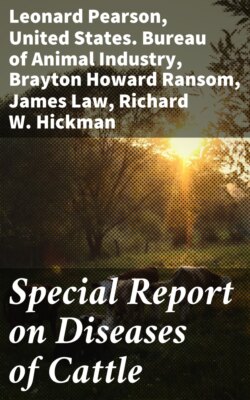Читать книгу Special Report on Diseases of Cattle - Lowe - Страница 59
На сайте Литреса книга снята с продажи.
GENERAL SYMPTOMS OF POISONING.
ОглавлениеIt is not always easy to differentiate between poisoning and some disease. Indeed, examination during the life of the animal is sometimes wholly inadequate to the formation of an opinion as to whether the case is one of poisoning or, if it is, as to what the poison may be. A chemical and physical examination after the death of the animal may be necessary to clear up the doubt. On the other hand, the symptoms may be of such a nature as to point unmistakably to poisoning with a certain agent. In general, the following classes of symptoms may be regarded as indicative of poisoning: Sudden onset of the disease without visible cause, a number of animals being similarly affected at once, with severe gastrointestinal disorder or derangement of the nervous system, or both; sudden alteration of heart action in relation to frequency, force, or rhythm; local irritation, dyspnea, or change in the urine or urination.
After death, lesions of the greatest variety may be found, and it is necessary for one to be skilled in anatomy and pathology in order to determine their significance. Oftentimes the stomach and intestines are red, have thick walls, and contain blood. This signifies a severe irritant, such as arsenic or corrosive sublimate. Other alterations sometimes found are inflammation of the kidneys or bladder, points of hemorrhage in various organs, changes in the blood, congestion of the lungs, and certain microscopic changes.
